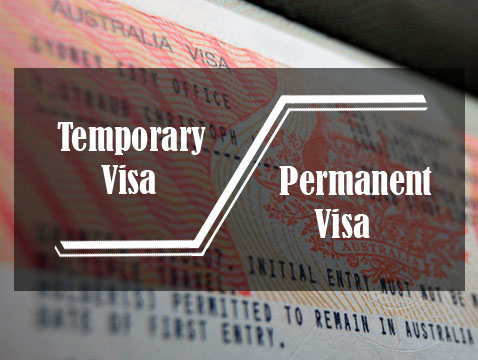
What is a Fiance Visa Australia?
September 5, 2018
What are The Character Requirements to Apply for Australian Visa
September 5, 2018Difference Between a Permanent and a Temporary Visa?
Once a person is granted a permanent visa they are permitted to travel to Australia and remain permanently.
Temporary Visa
On the other hand, this visa only permits the holder to travel to Australia and remain for a specified period of time. A holder or owner must either depart before it expires or apply for another one whilst they are still in Australia.
A person who is in Australia as the holder of the visa should never let it expire before departing. If this occurs then the person will become an unlawful non-citizen and be subject to removal. Once a person becomes an unlawful non-citizen they will have only a very small number of options available to them to remain lawfully.
There are currently about 99 different Australian visas, both temporary and permanent.
Tourist visas
_________________________________________
The most obvious temporary visas are for tourists and there are several different categories of Visitor/Tourist visa Australia, such as:
the subclass 600 Visitor /Tourist visa,
the subclass 651 eVisitor visa,
and the Electronic Travel Authority visa, known in short as an ETA visa.
Depending upon the passport you hold, this will determine the appropriate visa for you as a tourist. If you are from countries such as Japan, Hong Kong or Singapore, then you would be eligible for an ETA visa. If however, you are from countries such as Thailand, Vietnam or the Philippines, then, unfortunately, you would not qualify to it and would, therefore, have to make an application for a subclass 600 Visitor /Tourist visa.
All visitors to Australia must have a genuine intention to visit Australia as genuine tourists only and have access to adequate funds to support themselves during their stay.
Those who have to apply for a subclass 600 Visitor/Tourist visa need to supply documentary evidence to support their application.
Also, if you have a relative in Australia who is either an Australian citizen or Australian permanent resident, and they are prepared to sponsor your visit, then you may be able to qualify for a Sponsored family stream visa. It should be noted however that holders of sponsored family stream visas must depart Australia prior to their visa expiring, and furthermore, they may not be able to apply for an extension whilst they are in Australia, depending on the conditions of their visa.
Permanent visa
_________________________________________
Australia has two main pathways for Australian permanent residency, the family migration stream, and the skilled migration stream. Skilled migration is where the applicant has relevant qualifications, work experience, and skills that are in demand. Some skilled visas require the applicant to reach a certain amount of points to satisfy the eligibility for a skilled migrant visa. Points are awarded for many things, such as age, level of English literacy, qualifications, skills and recent work experience.
Partner Visa
_________________________________________
One of the most common permanent visas under the family migration stream is the Australian immigration partner visa. This is where the applicant is in a genuine a continuing relationship with an Australian citizen or Australian permanent resident. The relationship must be either a marriage which is legally recognised in Australia or a de facto relationship. The requirements for a partner spouse visa Australia based on a de facto relationship is that the applicant and sponsor have been living together in a genuine spouse-like a relationship without any significant period of separation for at least 12 months immediately prior to the date of application. There can be exceptions to this last requirement.
Both the applicant and sponsor must satisfy certain eligibility criteria, or the visa will not be granted. For example, the sponsor must be an Australian citizen or Australian permanent resident, and he or she must be an approved sponsor, in that they can demonstrate that they can provide adequate accommodation and financial support for their partners.
Apart from the applicant and sponsor having to evidence that they are in a genuine relationship, the applicant must be able to satisfy Australia’s health a character criteria.
Lastly, partner visa applicants can include in most cases their dependent family members, such as their children for example. Where this happens, the included applicants are known as secondary applicants and the applicant is making a combined partner visa application Australia. All secondary applicants must satisfy their own criteria too. Any dependents of the applicant must satisfy the health and character criteria, whether they are intending to migrate or not. Even if a non-migrating dependant fails the health and character requirements, notwithstanding that they are not included in the partner visa application, it can in some cases result in the primary applicant applying for a partner visa being refused.
Are you currently looking to applying for an Australian visa? Do you need help? Contact AVA to learn more about Visitor visas / Tourist visas, Fiancé visas, Spouse visas / Marriage visas, De Facto visas & Spouse visas.

